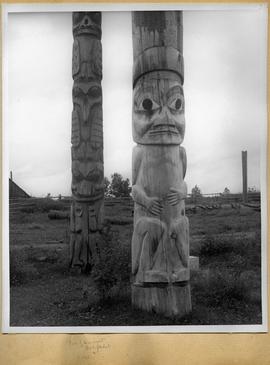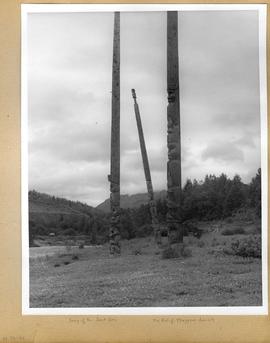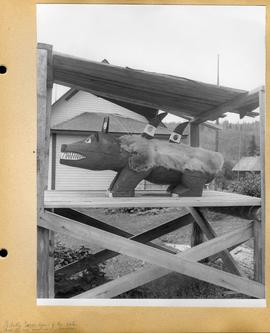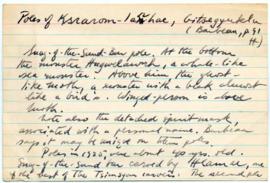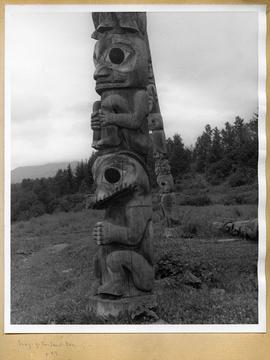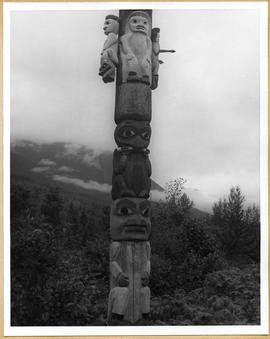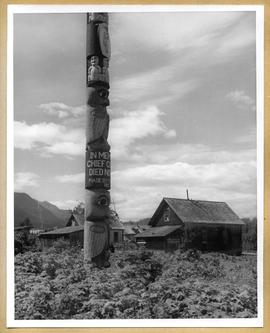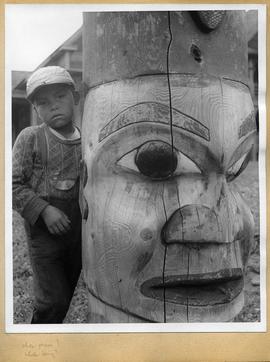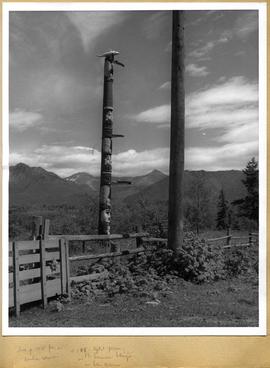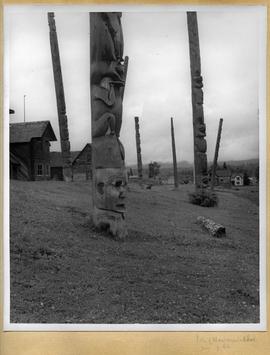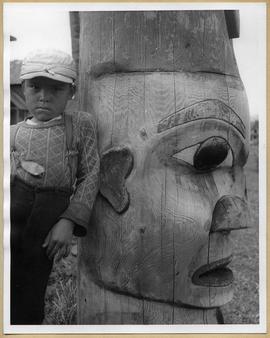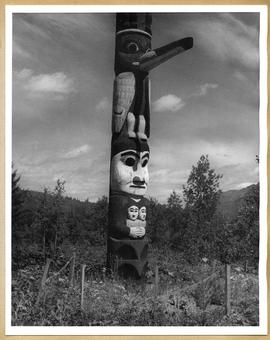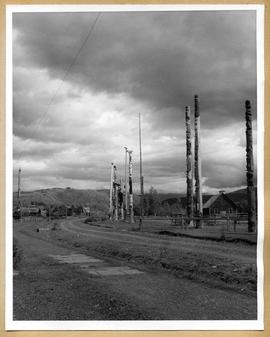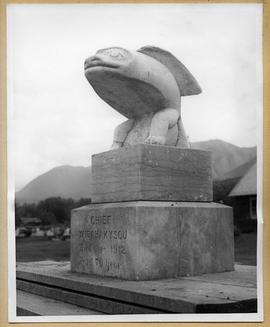- 94-a034829
- Item
- 1948
Parte de Stanley E. Read fonds
Image depicts two poles standing in an open area. The front pole features a human-like creature on visible portion. The back pole also includes a human figure at the bottom with an owl on top. The figures on the bottom may be crest figures (Leading In or Halfway Out) or a Man of the Wild. Read's note suggests that one of these may be a Pole of Hrkyadet at Kispiox.

